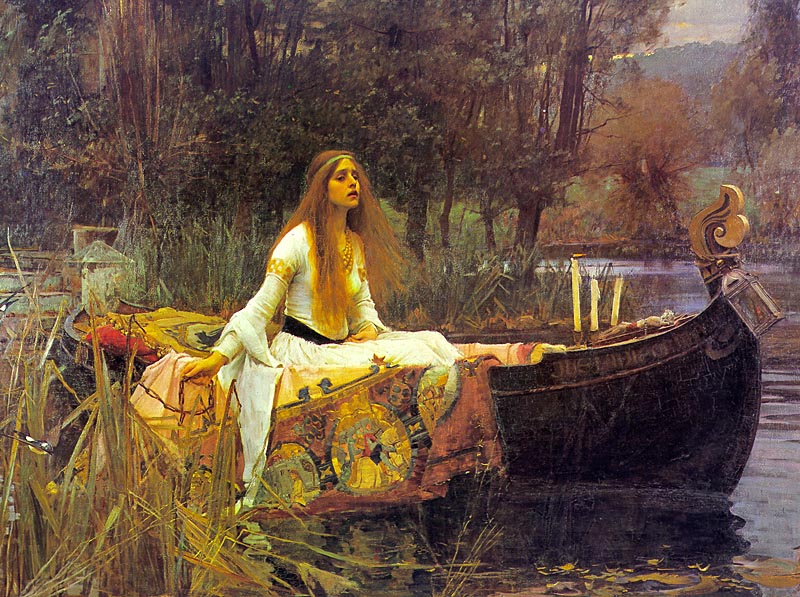

This is the first version of the Lady of Shalott painted by Waterhouse. This is the most Pre-Raphaelite of his paintings, set out in the open air with a typically English landscape illuminated by natural early evening light and with close attention to the autumn leaves, the reed choked river's edge and medieval details.
This lady is far younger than the Edwardian woman of his later painting. She is no more than a girl with the wistful, tragic quality of so many of Waterhouse's dreamy heroines. The scene shows the doomed Lady of Shalott setting of on her final voyage along the river to Camelot. The tapestry she has spent her life creating, trails behind her in the water and there is a lantern, candles and a crucifix on the prow of the boat, like a small alter. She looks very innocent in her white dress and loose hair, very definitely the cursed princess. The atmosphere is dreamy and magical, thanks to the mist on the water, the darkness of the forest and the approaching dusk, like a scene from a fairytale.
This makes it more difficult to interpret the picture, as the poem has been on occasions, as an allegory of the fallen woman, a young lady led astray to meet a fate worse than death. The Lady of Shalott dies, singing her own song, in the pursuit of love, fading away before she reaches human company. Art was not enough for her, she yearned for life and action, but the curse was that the lady was not permitted to join the world and live a life of action. This is also seen as an allegory of the artist, doomed to watch rather than act,and of a woman's lot in Tennyson's society. No wonder the poem and its many visual representations remained so popular for so long.
Painted in 1896, the original is in London's Tate Gallery.